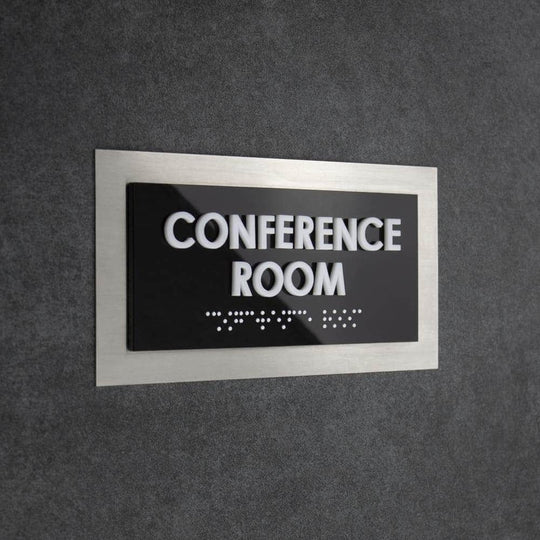There are no secondary elements in interior design. Every detail is a visual cue that either enhances the atmosphere of the space or clashes with it. That is why door signage is not just about room numbers or labels but a vital tool for communication between the space and its visitors.
Well-designed door signage does not raise the question “where is the room?” — it intuitively guides. It is a reference point, a marker, and at the same time, a business card of style. In premium hotels, showrooms, offices, or studios, a door sign creates a micro-dialogue with the guest: everything is thought out, quality matters here, and we know what we are doing.
At Bsign, we approach sign creation from an architectural perspective. We study the space, the style, and the color scheme. We suggest materials that not only visually resonate with the interior but also functionally suit the environment.
For example, a modern coworking space with open planning might benefit from lightweight acrylic signs with engraving and a logo. Meanwhile, a boutique hotel with a Scandinavian interior would be best suited with door number signs made of warm wood with a pleasant tactile texture.
Door Signage Is Not About a Label. It Is About Logic and Style
When choosing signage, it is important to ask a few questions:
- Does it make navigation easy and intuitive?
- Does it align with the interior’s aesthetics?
- Will it withstand contact with hands, cleaning agents, and time?
Looking for door signage? Buy on Bsign Store, every sign is a “yes” to all of the above. We produce signage that looks appropriate in spaces with any level of foot traffic, from boutiques with 20 visitors a day to hotels with hundreds of guests. The materials are selected to last for years without losing their appearance.
Where Door Signage Works: Real-Life Examples
The versatility of door signage lies in its universal need. But its appearance and function change depending on the context. Here are a few typical scenarios where signage plays a key role — and where our solutions are already in place:
- Hotel and apartment complexes. Room number signs, icons, logos — all in a unified style that supports the brand. In premium locations, we often use dark wood with brass or satin-finish steel.
- Coworking spaces and business centers. Clear, stylish labeling for meeting rooms, utility rooms, kitchens, and restrooms — without visual clutter. QR codes are often added for booking or app navigation.
- Medical facilities. Contrast, durability, and ADA compliance are all important considerations here. We include Braille, tactile components, and long-lasting materials.
- Educational institutions, schools, and universities. Clear markings for classrooms, staff areas, and lounge zones — designed for intuitive navigation by large numbers of people.
- Retail stores and showrooms. In these spaces, door signage often combines aesthetics with commercial function. A sign not only indicates a “fitting room” or “staff only” area but also becomes part of the interior’s branded design.
How Ordering at Bsign Works
We have made the process as simple as possible — just a few steps:
- You send a request.
- We clarify the details, from material, size, shape, and color to the logo and QR code.
- We prepare a mockup and cost estimate.
- We produce everything by hand, including laser cutting, engraving, and UV printing. Each sign goes through quality control.
- We ship the finished product.
Want your space to speak the language of style, precision, and attention to detail? Visit the Bsign Store website and see what character-driven door signage looks like.

